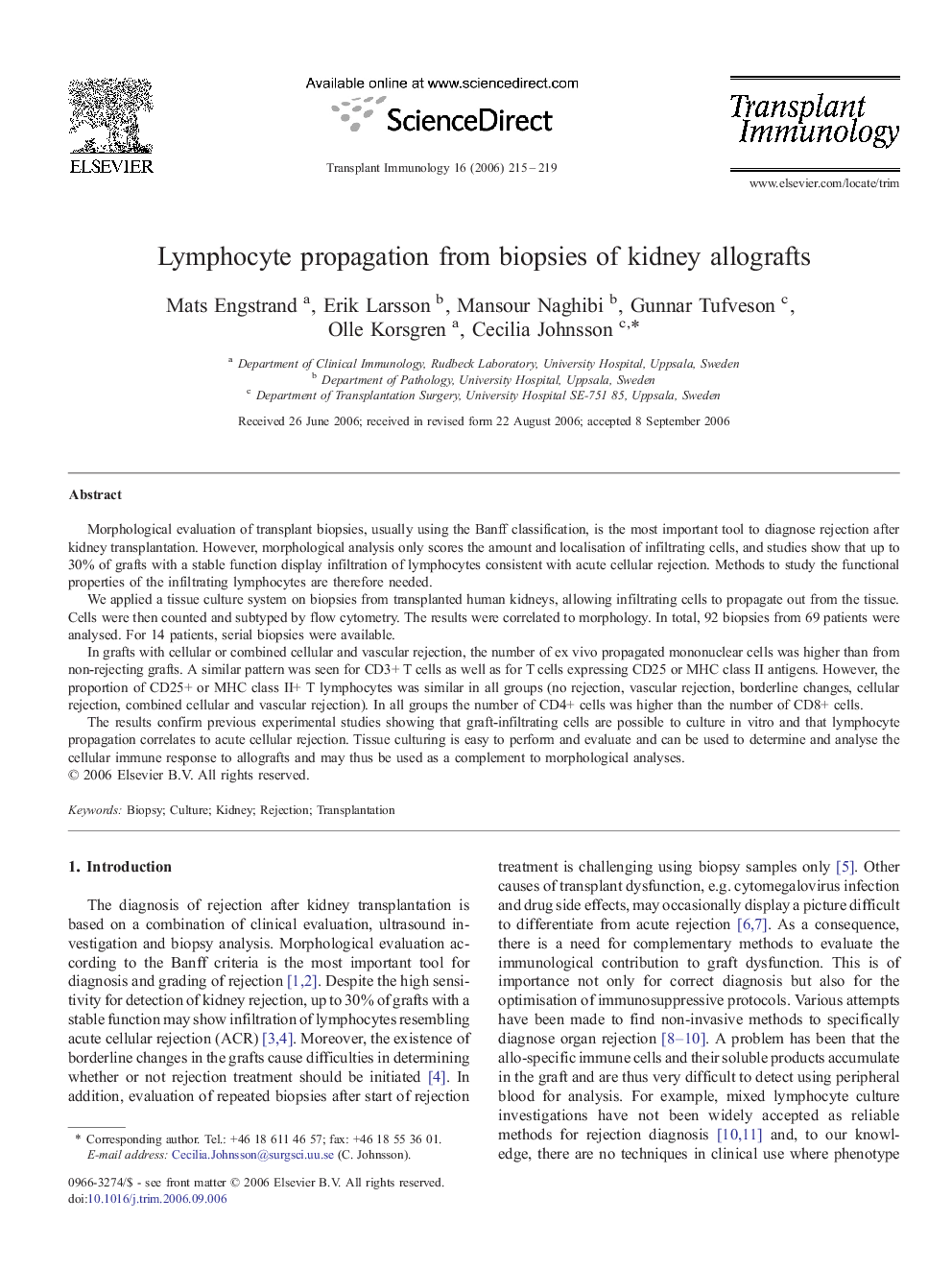| Article ID | Journal | Published Year | Pages | File Type |
|---|---|---|---|---|
| 3392598 | Transplant Immunology | 2006 | 5 Pages |
Morphological evaluation of transplant biopsies, usually using the Banff classification, is the most important tool to diagnose rejection after kidney transplantation. However, morphological analysis only scores the amount and localisation of infiltrating cells, and studies show that up to 30% of grafts with a stable function display infiltration of lymphocytes consistent with acute cellular rejection. Methods to study the functional properties of the infiltrating lymphocytes are therefore needed. We applied a tissue culture system on biopsies from transplanted human kidneys, allowing infiltrating cells to propagate out from the tissue. Cells were then counted and subtyped by flow cytometry. The results were correlated to morphology. In total, 92 biopsies from 69 patients were analysed. For 14 patients, serial biopsies were available.In grafts with cellular or combined cellular and vascular rejection, the number of ex vivo propagated mononuclear cells was higher than from non-rejecting grafts. A similar pattern was seen for CD3+ T cells as well as for T cells expressing CD25 or MHC class II antigens. However, the proportion of CD25+ or MHC class II+ T lymphocytes was similar in all groups (no rejection, vascular rejection, borderline changes, cellular rejection, combined cellular and vascular rejection). In all groups the number of CD4+ cells was higher than the number of CD8+ cells.The results confirm previous experimental studies showing that graft-infiltrating cells are possible to culture in vitro and that lymphocyte propagation correlates to acute cellular rejection. Tissue culturing is easy to perform and evaluate and can be used to determine and analyse the cellular immune response to allografts and may thus be used as a complement to morphological analyses.
